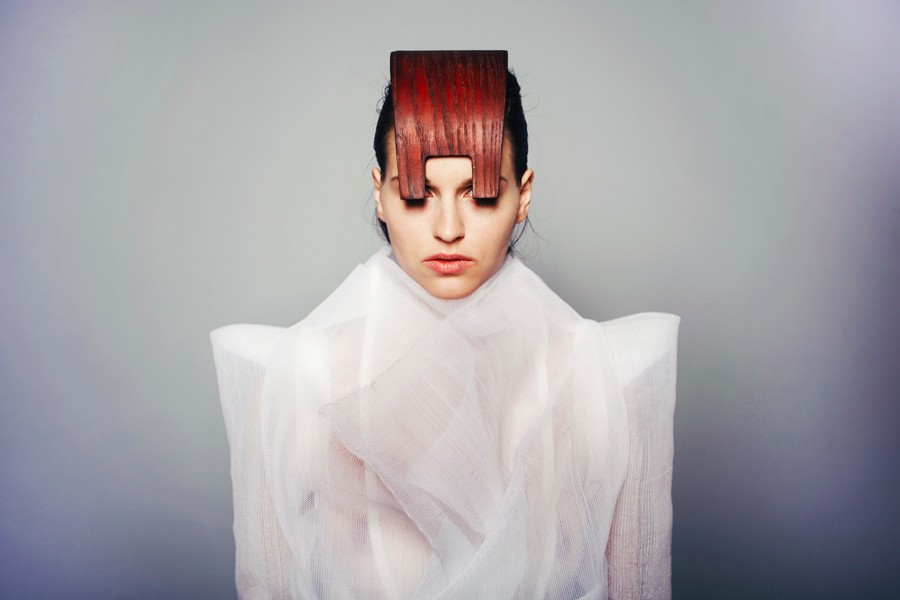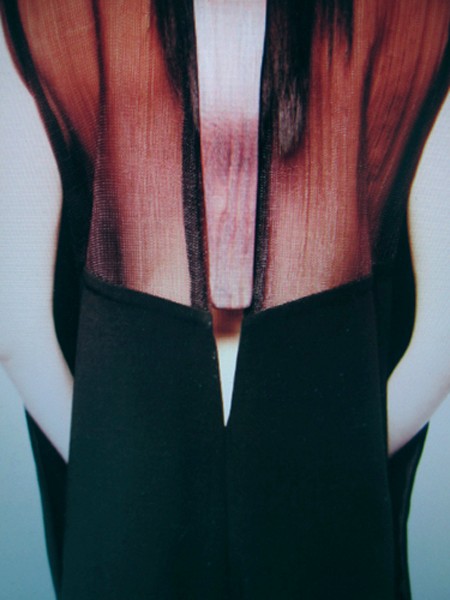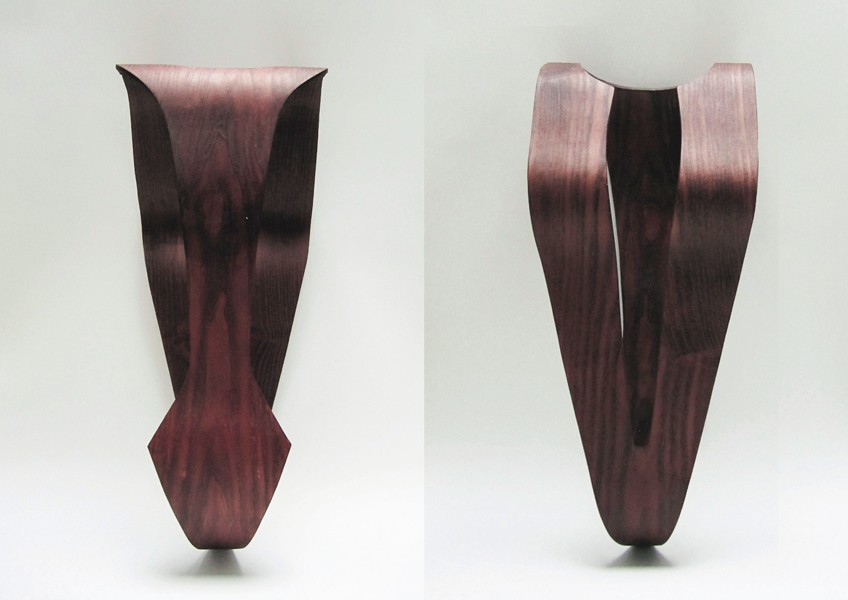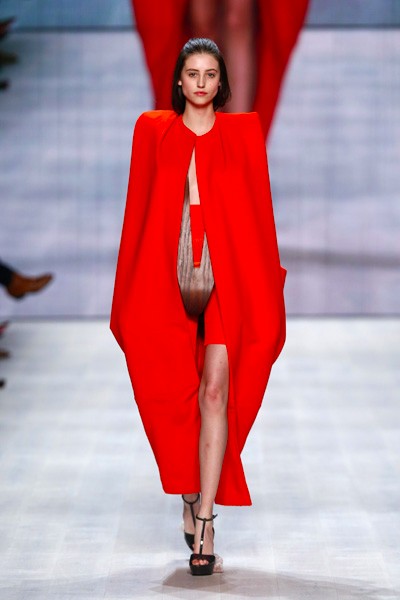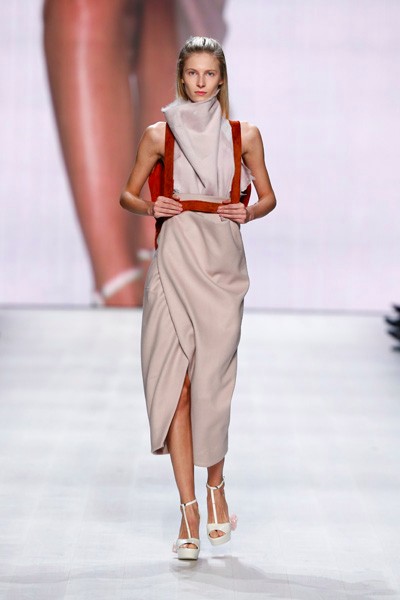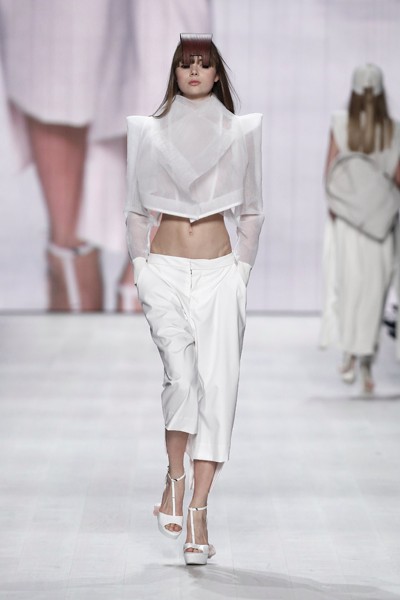Winner of the 2014 Annabelle Award, Elisa Kaufmann graduated from the Academy of the Arts Basel – Doing Fashion in 2014 with a Bachelor of the Arts in fashion design. Previously she had done a three-year apprenticeship as a clothing designer and tailor at Atelier GADOS. Elsia Kaufmann was one out of four students hand-picked from the Doing Fashion programme in Basel to showcase her work in the CH-Talents: Visionaries exhibition, opening tonight as part of the 2015 International Fashion Showcase during LFW.
Elisa, your work has a very sporty, sleek aesthetic to it – has working with Adidas influenced your designs in any way? If so, how?
No. I started working for Adidas by Stella McCartney after my graduate collection, but the world of sportswear has had a big influence on my clothes since the very first project. In my personal life, sports means a healthy balance between fashion crises and being stuck in too many things at the same time. Dance classes give me back full control. I feel my body again. It’s a nice symbiosis.
You talk about clothing being the visible backbone of human beings –could you please elaborate?
I wouldn’t go that far. My wooden sculptures are balancing around the body to strengthen your core and bolster you up. Maybe what I wanted to say is, we should go back to nature, because that’s the backbone of everything, also of clothing. You know, I never cared about logos, brands or prices.
You said wood symbolises the earth’s spine while clothes are the human spine– how did you come to that conclusion?
It’s the story of ‘waqwaq’, beautiful women growing out of trees. Their backbone is missing so at one point they’re falling apart. A mystical story, isn’t it?
Stability is a big theme for you. What is it about it that inspires / drives you?
My grandmother always carried a little piece of wood with her, which she knocked on if she was fortunate. My concept revolves around superstition, little things which give you confidence to believe in yourself. You could say it’s rather inspired by fragility, its elegance and being totally naïve in a way, which is beautiful. I wanted to show these beautiful, mystical women falling apart when the first ray of sun hits them.
Doing Fashion’s central focus is the development of a personal approach. How have you been developing yours?
You’re really free. You should use every medium to create your world, your own world. Fashion is still very stiff, models walking down the runway with music being played in the background. Maybe there are other possibilities? I remember my first presentation had two looks. I spoke about it in front of the teachers as if it was a presentation in primary school – without any music or ambiance at all. I shouted for the models to come out, but they were waiting in the wrong room. It was really embarrassing. I thought it should be like a normal presentation. There was no atmosphere at all; it was a little bit like when I presented my rabbit to my class in kindergarten… With time you recognise what kind of performances the other students are doing. In fact, at the beginning my view was that clothes needed to be special and really well done. Handcrafting is important to me. I also learned to be a dressmaker, and at the end of the day, we’re still doing clothes. I didn’t care about the presentation really. But of course I had to change a bit – maybe even drastically. At the Institute of Fashion Design you learn so many disciplines; you learn a lot about stuff you never thought was important.
Basel is not known as a major fashion capital – what traits or attributes does it have to offer that differ from London, New York, Paris or Milan?
It’s well-known in the art world and we also have notable architects, who are based here. Maybe it’s not important at all to be a fashion capital.
How has living in Basel shaped your growth as a person and designer in the fast-paced fashion industry?
Actually, I never moved to Basel. I lived in a little village near Basel at my parents’ home. I had an atelier space in the basement where I could work in total silence. If I needed to break out, my friends were never that far – Basel is small.
Why did you choose to study fashion?
It’s a love-hate relationship actually, and I often ask myself this question. Studying it was the best thing for me to do… It’s more the time following graduation because you need to leave your dream world, which you built yourself during that time. You need to get a job, need money, need to earn money. Who earns money in fashion… Fashion, for me, is a good way to tell stories without saying a word.
Doing Fashion encourages designers to break away from conventional images of beauty. How would you define beauty?
Beauty is fidelity and artlessness.
Still or sparkling?
I prefer a half to full glass of still water, and a half to empty glass of sparkling water.
Interview: Misha Skelly
CH Talents: Visionaries
Emerging Swiss Fashion Design
20-24 February 2015
Display Gallery
26 Holborn Viaduct
London
EC1A 2AT
